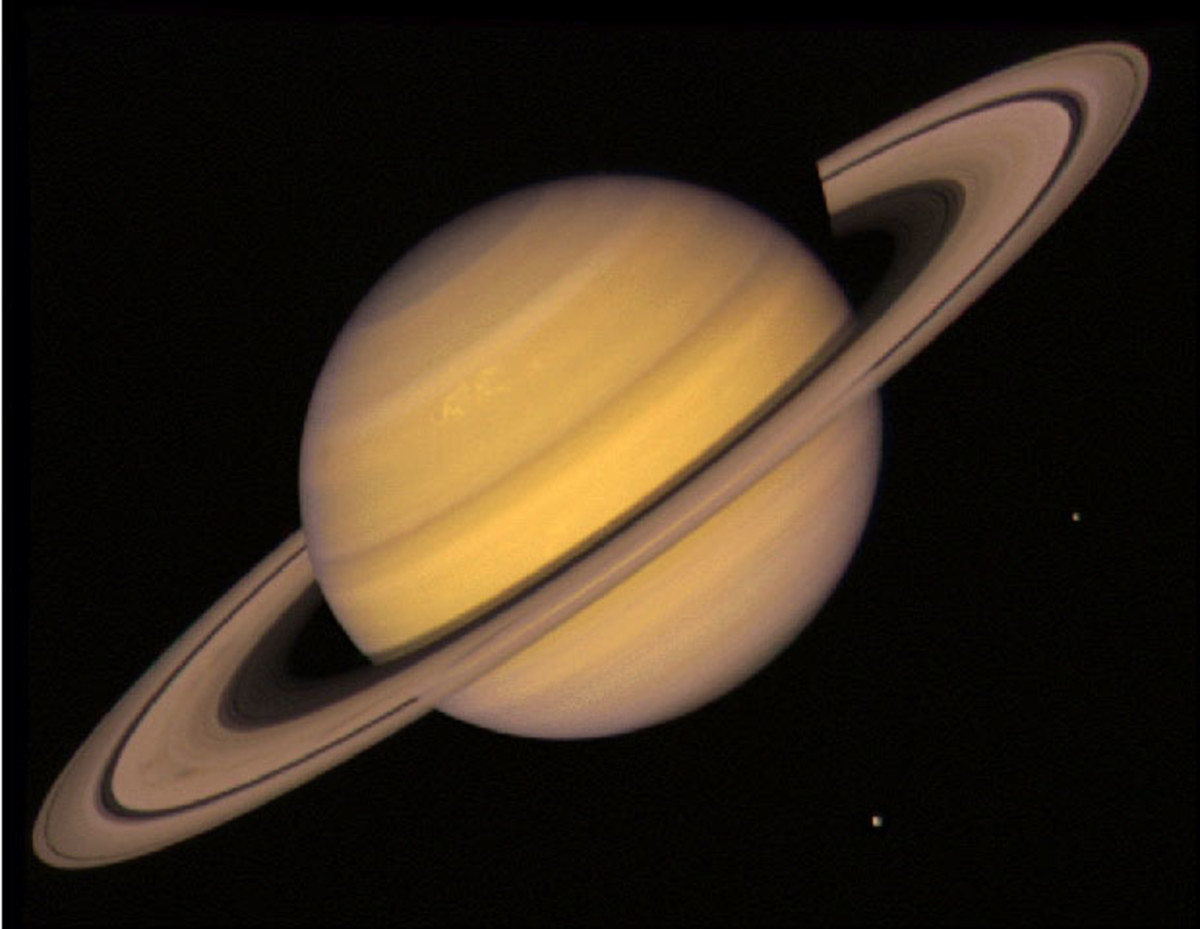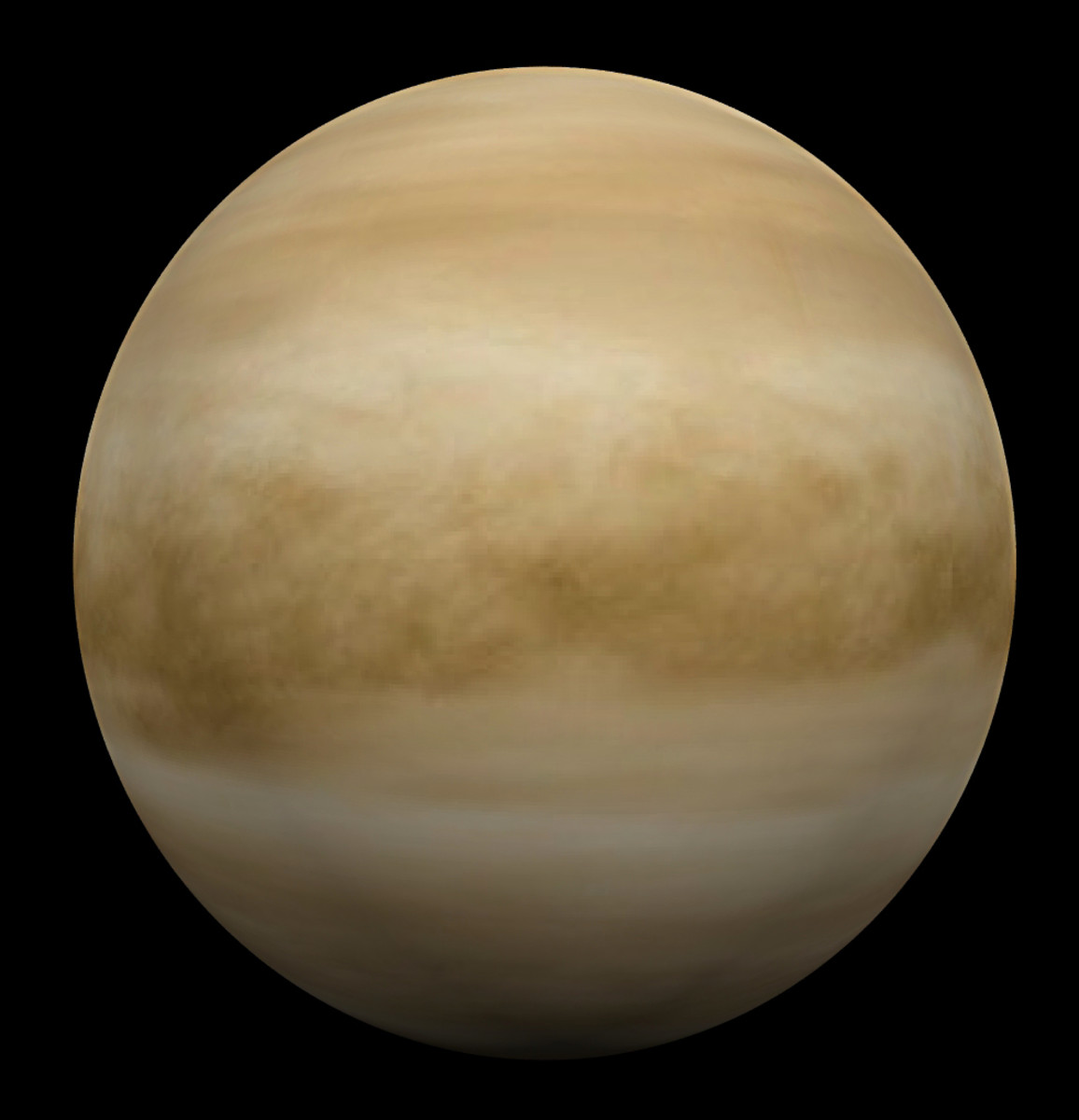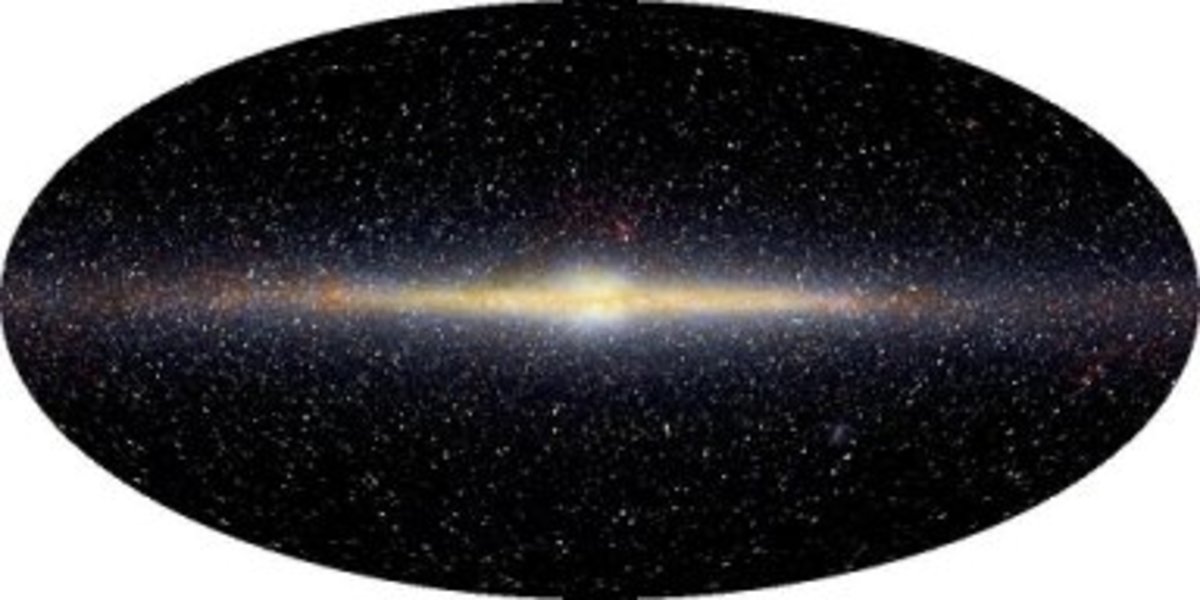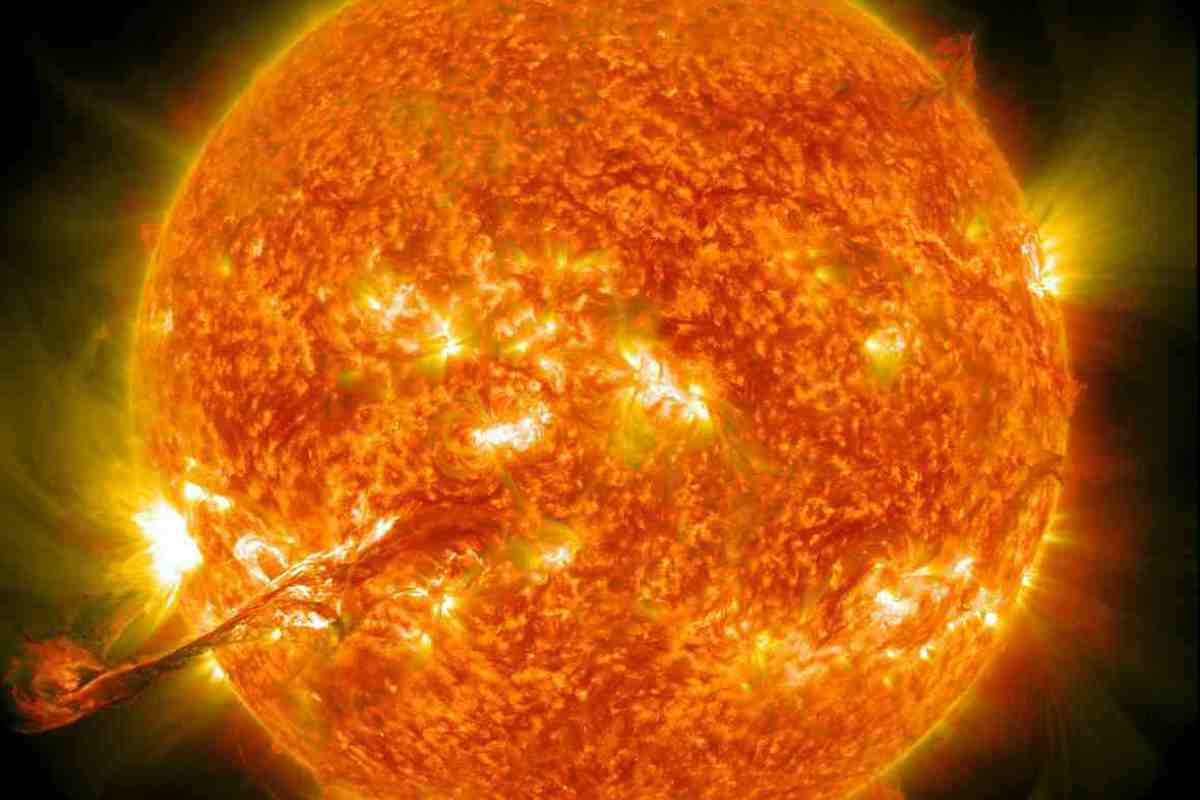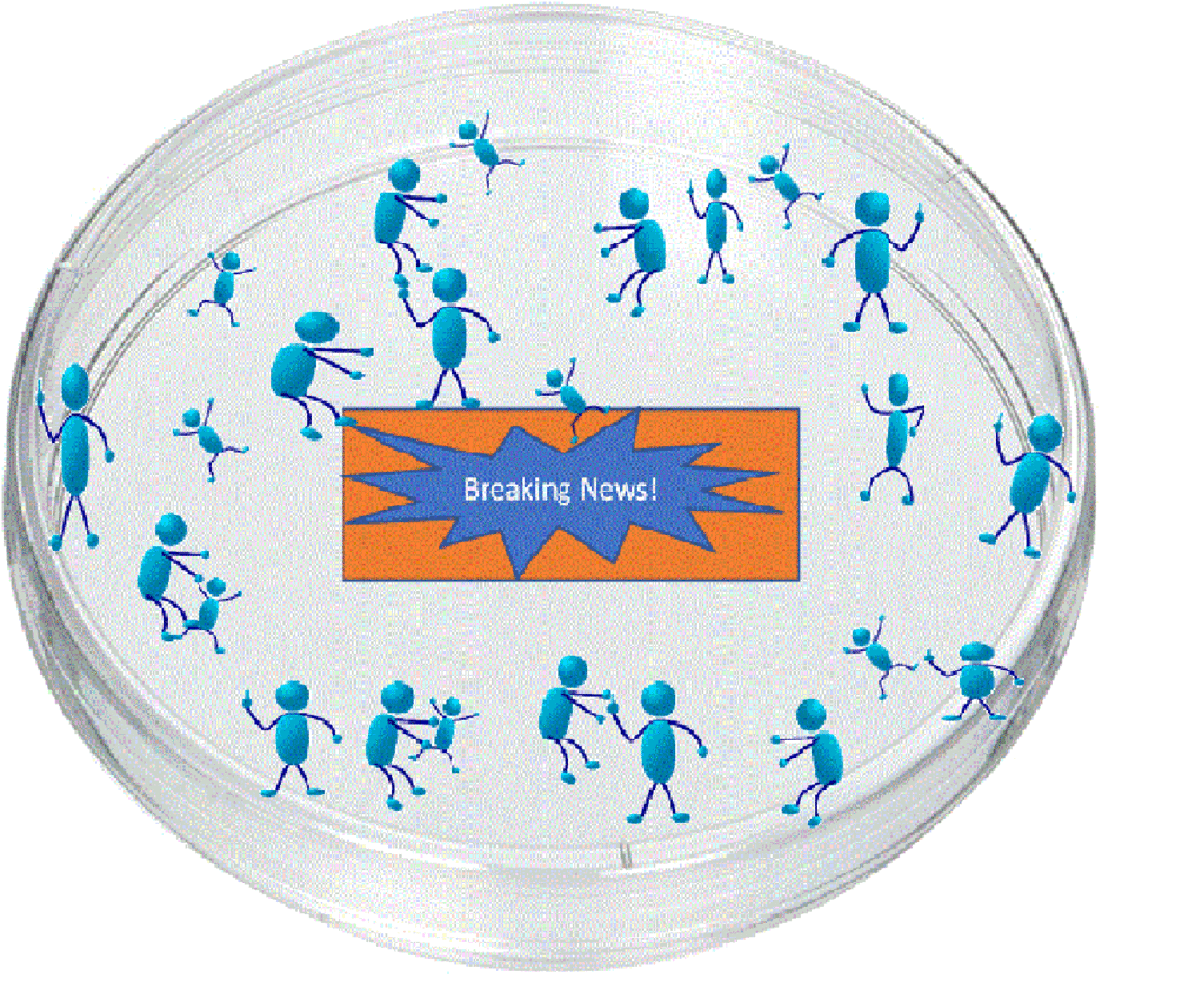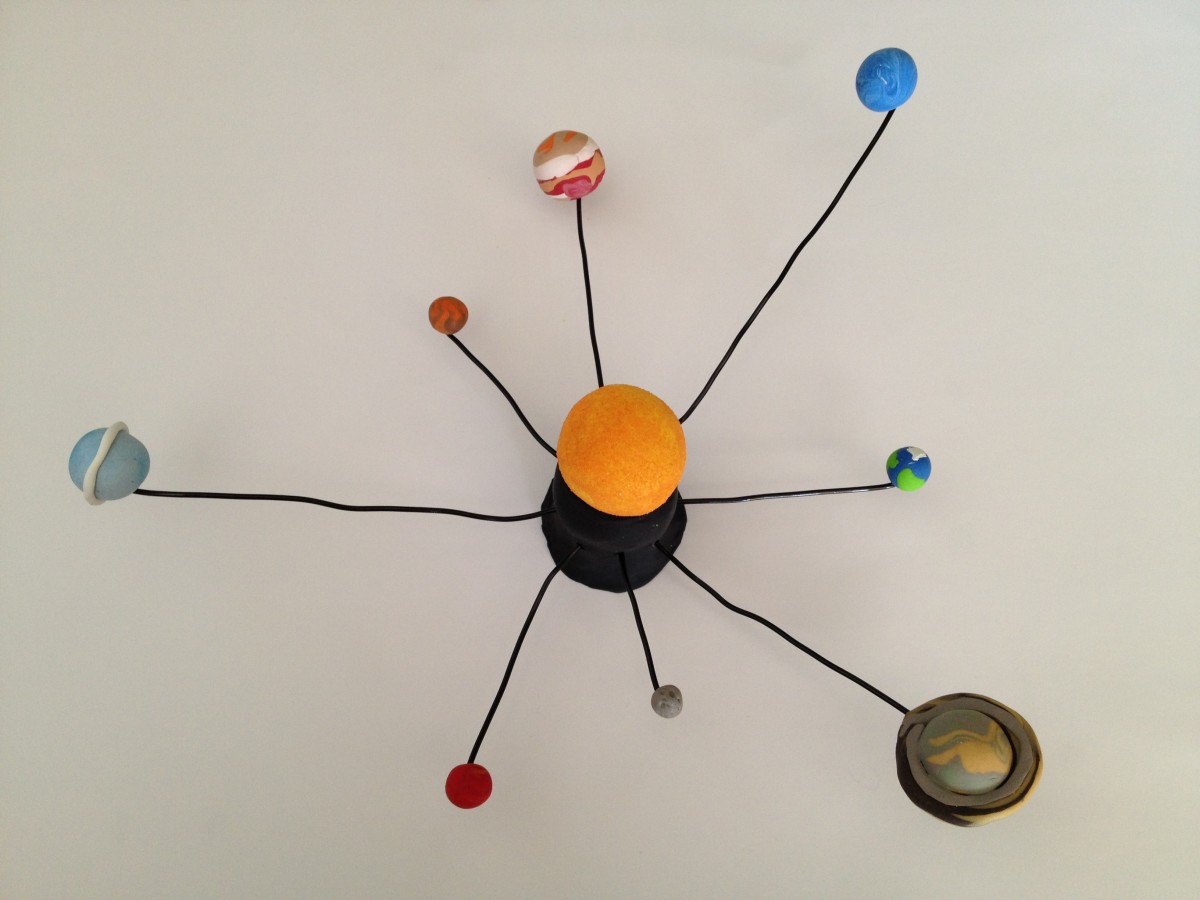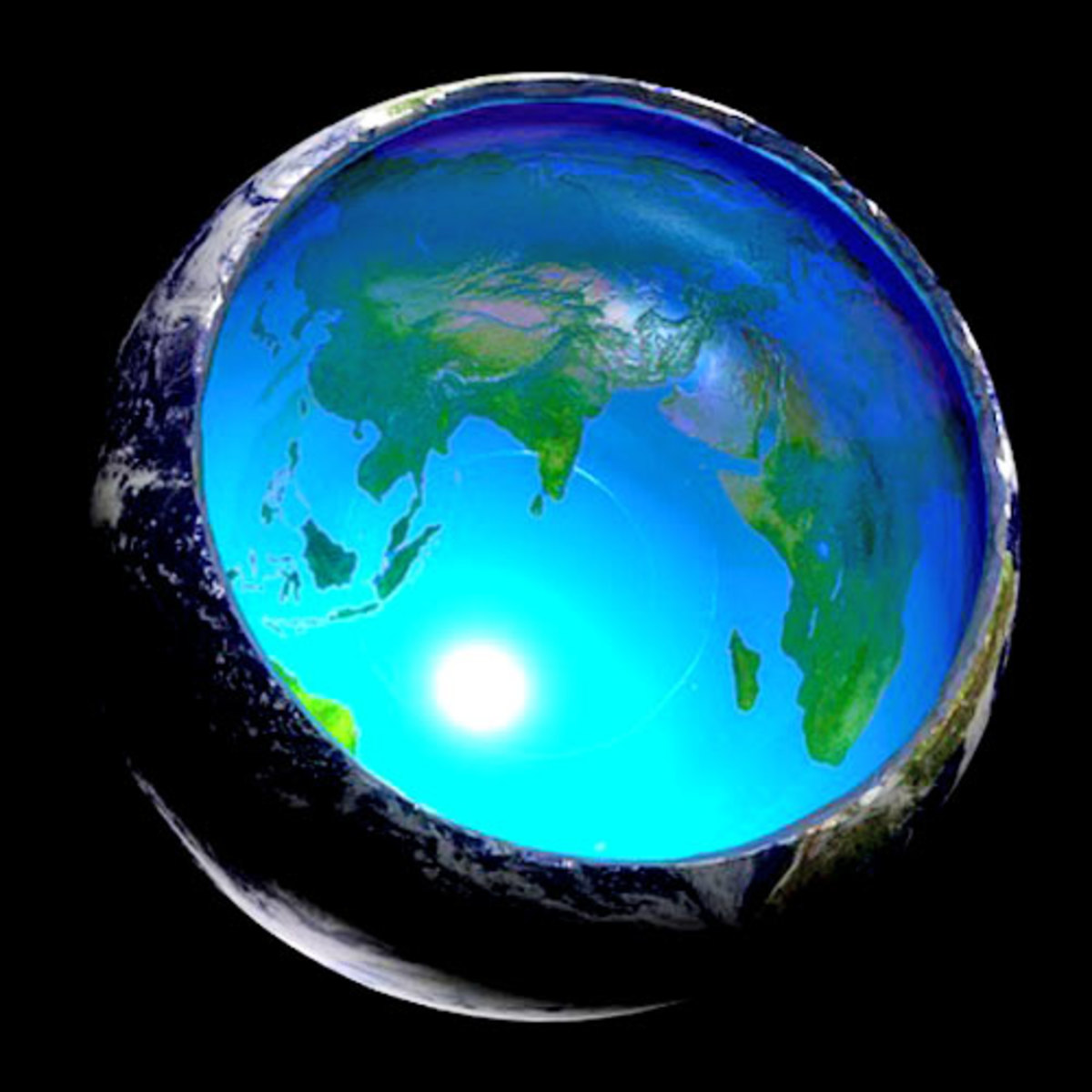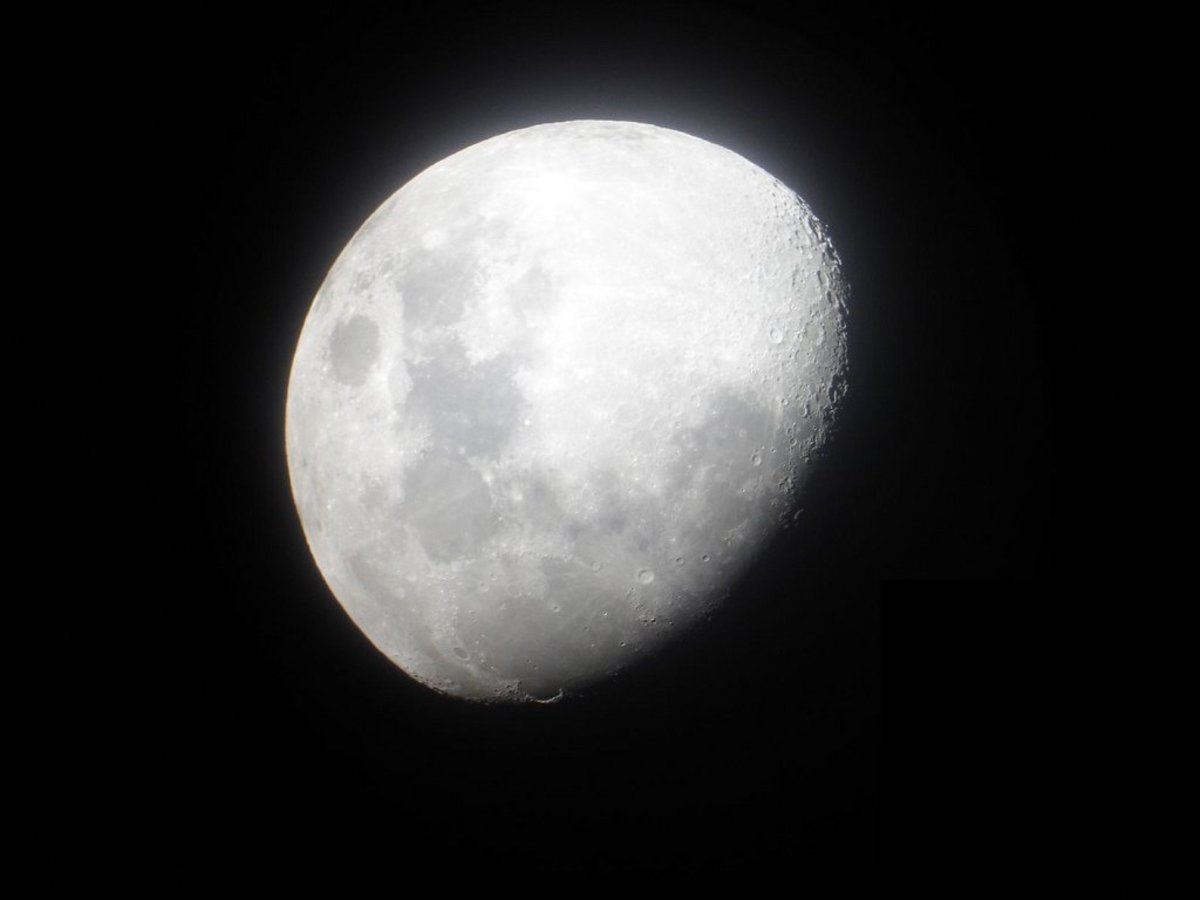Space Facts - Volume 4 Solar System Analysis
The Solar System
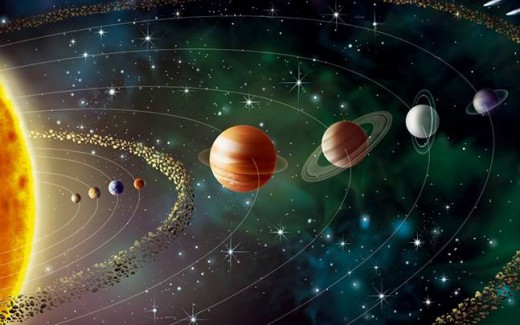
Factoid 46 - The Solar System
The Solar System is made up eight planets, more than 170 moons, several dwarf planets, millions of rocky asteroids and billions of icy comets. However the Sun makes up almost 98% of the mass of the Solar System. Small, rocky planets were made close to the Sun, where temperatures are very high. In the colder outer region, much larger planets were formed which had strong gravities that could trap lots of gas and build up huge atmospheres.
The Solar System formed out of a giant cloud of gas and dust 4.6 billion years ago. The gas collapsed under the weight of its own gravity and started spinning. At the centre, at the centre our Sun began to grow and the left over material formed a plate like disc around it. In this disc, particles clumped together to build moons and planets.
Our Solar System is also home to several dwarf planets, which are much smaller than our planets. There are currently 5 dwarf planets: Ceres, Pluto, Eris, Makemake and Haumea, but scientist believe that there are many dozens more.
There are billions of small objects in the Solar System. These include asteroids made of rock and metal, most of which are found in a doughnut-shaped region between Mars and Jupiter called the Asteroid Belt. Vast numbers of comets are in a giant area known as the Oort Cloud. The Oort Cloud is like a bubble of leftover material around the rest of the Solar System.
Factoid 47 - Mercury
Diameter (km): 4879
Mass (compared to Earth): 0.055
Gravity (compared to the Earth): 0.38
Average Distance from the Sun (million km): 57.9
Rotation period (hours): 1407.6
Orbital Period (in Earth years): 0.24
Number of known moons: 0
Atmosphere composition: None
Mecury is a difficult planet to observe and explore becuase it is so close to the sun. They day time temperature can rise to a scorching 450°C, but as it has no atmosphere, the nights can be extremely cold, sinking below -180°C. The planet's surface is covered in craters made by comet and asteroid crashes.
Mercury was named after the Roman messenger of the gods.
Launched on 3 August 2004, NASA's Messenger was the first spacecraft to orbit Mercury. From 2011 on wards, it spend 4 years mapping the surface of Mercury. It closely studied freezing craters at the North Pole containing water ice, which was probably brought here by comets and asteroids crashing in the planet millions of years ago.
Mercury is so close to the Sun that by the time, the Earth has been round it once, Mercury has been round almost more than 4 times!
Mercury
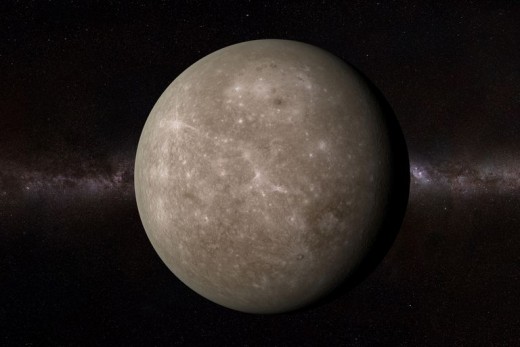
Factoid 48 - Venus
Diameter (km): 12,104
Mass (compared to Earth): 0.815
Gravity (compared to the Earth): 0.9
Average Distance from the Sun (million km): 108.2
Rotation period (hours): 5832.5
Orbital Period (in Earth years): 0.62
Number of known moons: 0
Atmosphere composition: Carbon dioxide (Very Thick)
Sometimes called Earth's twin, Venus is about the same size as our planet, and is made of similar rocky material. But its thick, deadly carbon dioxide atmosphere is very different, and acts like a blanket of heat that roasts the planet to 500°C. That's hot enough to melt tin and lead. Clouds of deadly sulfuric acid fill the sky. The air is so thick that the pressure at the surface is 90 times as thick as the Earths.
Other than the Moon Venus is often the brightest object in the sky, in either the early morning or late evening.
Most of Venus's surface is covered with volcanoes. Until recently, scientists thought these were extinct. However, Venus Express discovered ozone and a mysterious layer of sulphur dioxide in the planet's atmosphere, which suggests that some of the volcanoes might still be active and erupting today.
On Venus the Sun rises in the West and sets in the East.
Venus
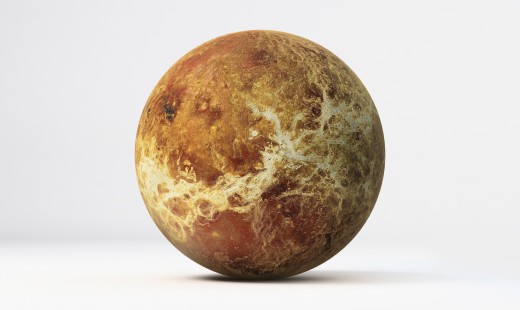
Factoid 49 - Earth and Mars
Earth
Diameter (km): 12,756
Mass (compared to Earth): 1
Gravity (compared to the Earth): 1
Average Distance from the Sun (million km): 149.6
Rotation period (hours): 23.9
Orbital Period (in Earth years): 1
Number of known moons: 1
Atmosphere composition: Nitrogen, oxygen (thick)
The Earth was formed 4.6 billion years ago and is the 3rd plaent from the Sun. Its the 5th largest planet in the Solar System. The distance from the Sun make its not to cold and not too hot, but just right for life to exist.
Earth's rotation is slowing down - in a 140 million years a day will be 25 hours.
71% of the surface of the Earth is made up of water.
Our planet is wrapped in a protective bubble called the Ozone layer. Its made up from 78% Nitrogen and 21% Oxygen, which shields us from some of the Sun's radiation.
The Earth is the densest planet in the Solar System, and at the temperature at its core is the same at the surface of the Sun about 6000 °C.
The moon is slowly drifting away from the Earth about the same speed as your finger nails grow.
Mars
Diameter (km): 6792
Mass (compared to Earth): 0.107
Gravity (compared to the Earth): 0.38
Average Distance from the Sun (million km): 227.9
Rotation period (hours): 24.6
Orbital Period (in Earth years): 1.88
Number of known moons: 2
Atmosphere composition: Carbon Dioxide (thin)
More spacecraft have been sent to Mars than any other planet. Like Earth is has seasons and a 24 hour day. However, temperatures rarely rise above freezing, ad the atmosphere is very thin and has almost no oxygen.
Since 1997, much of the exploration of Mars has been accomplished by robot vehicles called rovers. The unmanned rovers, are powered by solar and carry lots of scientific equipment, including high-definition camera, scoops to collect samples, and even lasers to break up rocks and see what they are made from.
One of the rovers Opportunity has spent more than 3000 days in space and travelled over 40 km.
Mars's rusty Red colour is due to the large amounts iron oxide in its surface. The white patch at its frozen North Pole is water ice.
Not only does Mars play host to the largest known Volcano in space "Olympus Mons" but also it has got the largest canyon. At 2,500 miles long at 4 miles deep at is lowest point.
Earth and Mars
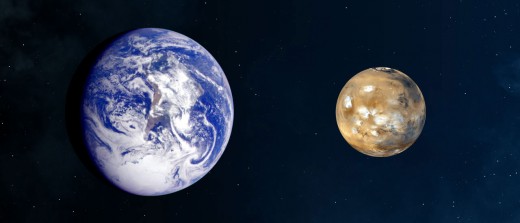
Asteroid Belt
Asteroids are small rocky bodies. Millions of them lie in a region between Mars and Jupiter known as the Asteroid Belt. Some are made of rock while others contain metals, such as nickle and iron.
Where do they come from?
Asteroids are most likely the leftovers of material that formed the inner planets. Two of the largest bodies in the Asteroid Belt are Vesta and Ceres. Vista is 525 kilometres wide, while Ceres measures 950 kilometres across. Ceres is so big its also considered a dwarf planet just like Pluto.
Astronomers have had great fun thinking up wacky names for Asteroids such as Tom Hanks, Meg Ryan, James Bond, Mr.Spock, Jabberwock and Anandapadmanaban.
There are 1,600 Asteroids that could prove a problem for Earth.
Asteroid Belt
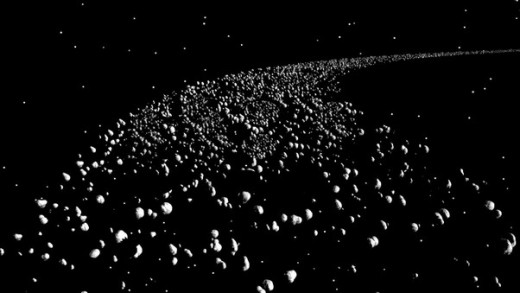
Factoid 50 - Jupiter
Diameter (km): 142,984
Mass (compared to Earth): 318
Gravity (compared to the Earth): 2.64
Average Distance from the Sun (million km): 778.6
Rotation period (hours): 9.9
Orbital Period (in Earth years): 11.9
Number of known moons: 67
Atmosphere composition: Hydrogen, helium, methane (very thick)
Jupiter is the largest planet in our Solar System and it measures a staggering 140,000 kilometres across. A vast ball of gases surrounding a small rocky core, it has powerful winds, constant lighting strikes and a huge storm called the Great Red Spot. This has been raging for more than 300 years and is about twice the width of Earth!
You could fit 1320 Earths inside Jupiter.
How many moons does Jupiter have?
Jupiter has 67 moons... That we know of! The largest of which are Io, Europa, Callisto and Ganymede.They were discovered in 1610 by Galileo and have been named the Galilean moons. "Io" bubble over with volcanoes, which shoot out fountains of lava and plumes of icy sulphur into space. "Europa" is covered in sheets of ice. However, scientists think that a liquid ocean where life may lurk lies beneath its frozen surface. "Ganymede" is the Solar Systems largest moon and is bigger than Mercury! "Callisto" is pockmarked with craters, Callisto is a dead world much like our moon.
Jupiter also has a set of thin dark rings, mostly made up of smoke-sizes particles and dust.
Jupiter
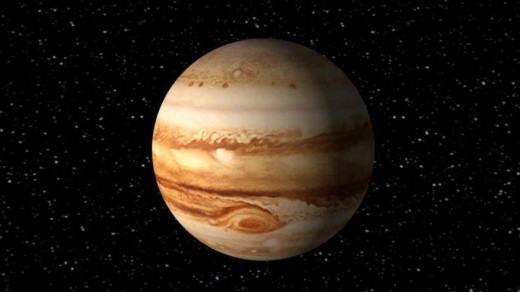
Factoid 51 - Saturn
Diameter (km): 120,536
Mass (compared to Earth): 95
Gravity (compared to the Earth): 0.93
Average Distance from the Sun (million km): 1434
Rotation period (hours): 10.7
Orbital Period (in Earth years): 29.5
Number of known moons: 62
Atmosphere composition: Hydrogen, helium, methane (very thick).
Saturn is a wonder across the Solar System, its the second largest planet in the Solar System at 120,000 km across. Its made of hydrogen and helium, both of which are lighter than water, so if you had a bigger enough bath, you could make Saturn float in it! It also has spectacular rings and is host to Titan, the only moon with a planet-like atmosphere.
Saturn's rings were discovered by Galileo Gallilei in 1610, using an early telescope. He wasn't sure what they were and described the planet as having two 'Ears'. A few decades later, Dutch scientist Chritstiaan Huygens, using a more powerful telescope, saw what he thought was rings around the planet. In 1675, another Italian, Giovanni Cassini, found that the ring was actually made up of several rings.
Saturn has more than 30 rings, they are made up from billions lumps of rock and ice. These lumps range from particles the size of grains of sand to boulders as big as a house. The rings are 280,000 kilometres from edge to edge, but only 10 metres thick.
Saturn's atmosphere is thick with Hydrogen and helium. Powerful storms rage on Saturn, with winds blowing at 1800 kilometres per hour near the equator. Lightning storms on Saturn can last up to 6 months, firing bolts that are 10,000 times more powerful than those seen on Earth!
Saturn has 62 moons the largest of which is Titan, which is the second largest moon in the Solar System. Its the only moon to have a atmosphere and clouds of its own. Scientist think Titan was similar to Earth billions of years ago when life first started.
The atmosphere of Titan is made up mostly of nitrogen and gas and is so thick that it hides the surface. To find out more about the moon, scientists dropped the Huygens probe onto its surface in 2005. The probes batteries lasted just over an hour and it was able to beam back images and data. Scientist are planning more missions to Titan in the future.
The temperature on Titan is so cold that the natural gas we use on Earth as fuel becomes an oily liquid on Titan, which runs into rivers and lakes on the surface. Strong winds blow to make dunes of oily sand, Scientist also think there maybe volcanoes which erupt water ice rather than lava. With methane and ethan rather than water, Titan's longest river is 320 km long!
Saturn
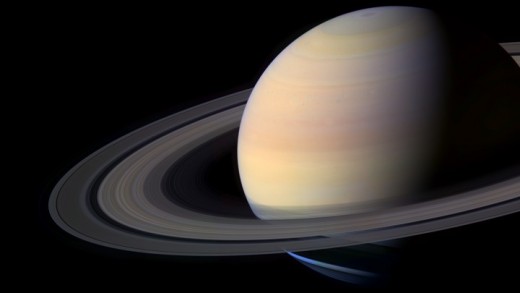
Factoid 52 - Uranus
Diameter (km): 51,118
Mass (compared to Earth): 15
Gravity (compared to the Earth): 0.89
Average Distance from the Sun (million km): 2873
Rotation period (hours): 17.2
Orbital Period (in Earth years): 84
Number of known moons: 27
Atmosphere composition: Hydrogen,helium, methane (very thick).
All planets turn on a vertical axis like a spinning top, except Uranus, which spins like a basketball on its side. We believe this is because a massive Earth-sized object crashed into Uranus billions of years ago and knocked it over.
Uranus got its name from the Greek god of the Sky by Johann Bode in 1850.
Uranus is the coldest planet in the Solar System with temperatures all the way down to -224°C.
The atmosphere of Uranus is mainly made up of hydrogen and helium with a small amount of methane. The methane traps red light and scatters blue light, which is why the planet appears blue. Although we don't know for sure what Uranus's interior is like, scientists think that there is a slushy mixture of icy water, ammonia and methane that extends thousands of kilometres. The central part of the planet is probably a small rocky core.
Uranus
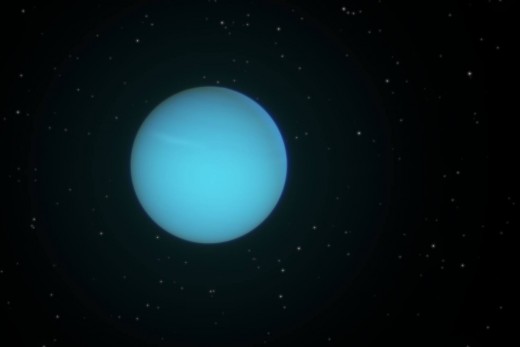
Factoid 53 - Neptune
Diameter (km): 49,528
Mass (compared to Earth): 17
Gravity (compared to the Earth): 1.12
Average Distance from the Sun (million km): 4495
Rotation period (hours): 16.1
Orbital Period (in Earth years): 164.8
Number of known moons: 14
Atmosphere composition: Hydrogen, helium, methane (very thick).
Blue Neptune is almost identical to twin Uranus, with an atmosphere of hydrogen, helium and methane, but with a deep blue colour. It probably has an interior of ices and a rocky core. It is Methane that gives Neptune its deep blue.
Since its discovery in 1846, Neptune has completed only one full orbit of the Sun.
Neptune has the fastest winds in the Solar System. Wind speeds reach up to 2400 kilometres per hour! The planet also has distinct methane clouds forming the highest layers of its atmosphere, and water ice, hydrogen sulphide and ammonia clouds occurring deep in the layers of its atmosphere. Because Neptune is so so far away from the Sun (and its heat) the methane gets squeezed due to its dense atmosphere it turns into solid diamonds leading to extremely hard hailstorms!
Neptune
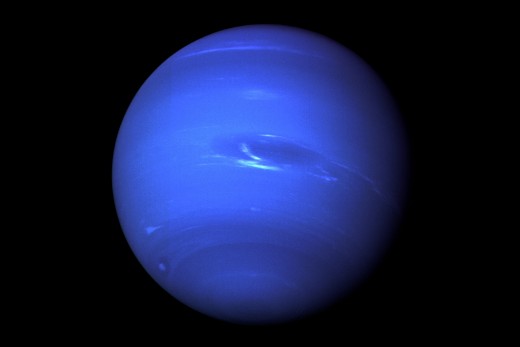
Factoid 54 - Pluto
Pluto is a dwarf planet that orbits the outer Solar System. In July 2015, NASA's New Horizons spacecraft made the first ever flyby Pluto, having blasted off in January 2006. New Horizons travelled more than 4.8 billion kilometres to zoom just 12,500 kilometres above Pluto's surface. The images sent back showed craters formed by impact of bodies from space. It also spotted cliffs and valleys that may have been formed by the action of Nitrogen Ice on the surface and other processes. Instruments detected that Pluto as a thin atmosphere of Nitrogen, methane and carbon dioxide.
Pluto
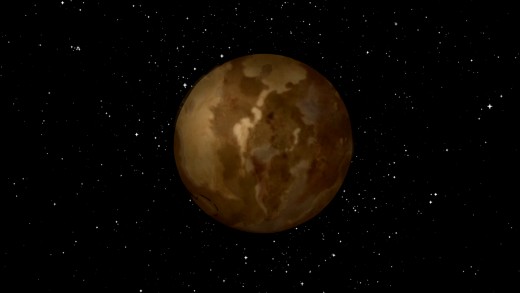
Factoid 55 - Comets
Comets are special visitors in our night sky. They are small bodies, just a few kilometres wide, made of rock and dirty snow. Comets store lots of water ice. Some scientists think this is how water came to Earth when they hit our planet billions of years ago. This water may of hit our oceans.
As a comet glides nearer to the Sun, the Sun's energy warms the comet's ice, causing it to boil off and form a tail. This is when the comet can become a fantastic sight in the nights sky. Eventually, the comet will swing around the Sun on a huge curved path and head back into deep space and the cold region of the Oort Cloud.
The Oort Cloud is home to billions of icy bodies left over from when the Solar System formed, the Oort cloud lies between 6500 and 13,000 billion kilometres from the Sun. Sometimes these icy bodies bump into each other, sending one towards the Sun. As it gets closer, it heats up, turning into a comet.
Comets
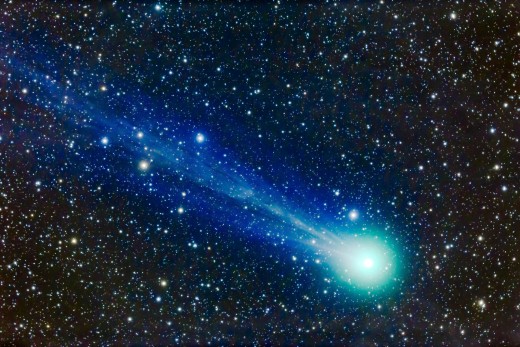
Factoid 56 - Exoplanets
In the past 20 years, technological advances have allowed astronomers to discover planets in our galaxy orbiting stars other than our own. Planets that lie beyond our Solar System are called exoplanets and more than 1700 have been found. Scientists estimate that of the 200 billion stars in the Milky Way, more than 20 billion could have planetary systems.
Since 2009, the Kepler space observatory, a very sensitive telescope, has been measuring the brightness changes in more than 100,000 stars. To discover Earth-like planets, Kepler will need to detect a drop in brightness of just one hundredth of a per cent. That's like seeing a car's headlight dim when a fly moves in front of it.
Exoplanets
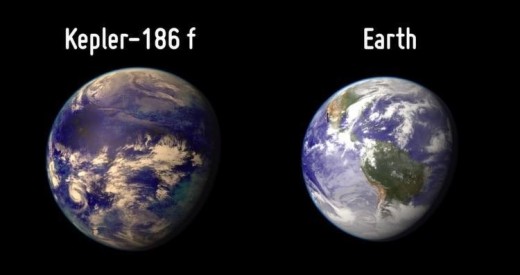
Factoid 57 - Hot Jupiters
One of the big surprises of exoplanet studies has been the discovery of gas giants orbiting very close to their stars. In many cases these giant planet are similar to Jupiter, but orbit much closer than Mercury does to our Sun. These planets, called 'hot Jupiters', go around their star every two or three days.
The exoplanet HD 189733b is 63 light years away and orbits its star 13 times closer than Mercury orbits the Sun. Its temperature can get as high as 925°C. Being so close to its star, HD 189733b is believed by scientist to be boiling away, losing almost 600 million kilograms of mass every second.
The temperature of hot Jupiter's are so high that they can melt silver.
Hot Jupiters
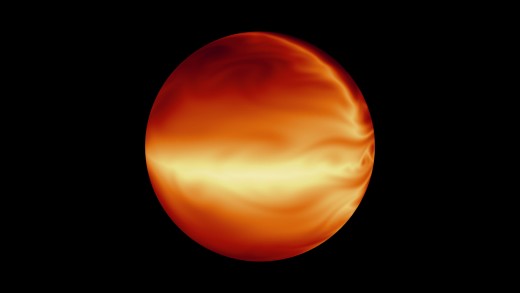
Factoid 58 - Super Earths
A super-Earth is an exoplanet with more mass that the Earth, but less than a giant gas planet. A typical super-Earth could be made of rock or metal, and may have oceans or very thick atmosphere.
Astronomers have found that a star called HD 219134, which lies 21 light years away, has a planet system of three super-Earths. One of these is 1.6 times larger in diameter and four times greater in mass than the Earth, and has a temperature of 430°C.
Super Earths
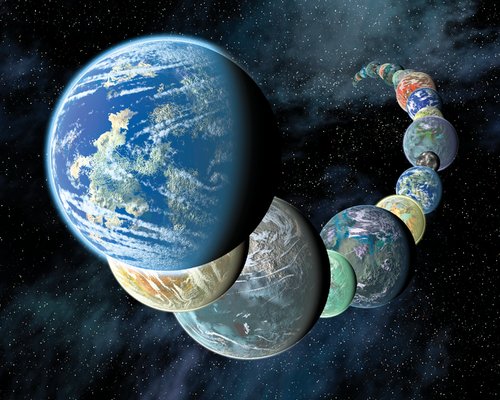
Factoid 59 - Hunting New Earths
One of the major goals of modern astronomers is to discover Earth-like planets. This means searching for worlds that are small and rocky, that orbit a middle ages star which should continue to produce light ans warmth for several billion years, and could possibly have liquid water on the surface.
One of the most Earth-lke planets discovered so far, Kepler-425b was spotted in July 2015 by NASA's space observatory. The exoplanet is about 1400 light years away from our Solar System in the constellation of Cygnus. It is orbiting a star that is almost the same size and temperature at the Sun. A year on Kepler-425b lasts 385 days which means it must orbit its star about that same distance as the Earth from the Sun.
Astronomers also think that Kepler-425b may have an atmosphere, weather systems and even active volcanoes. They also estimate that Kepler-425b's star is 1.5 billion years older than the Sun, so life would have had more time to evolve. However, no one is sure whether Kepler-425 is habitable.
New Earths and Goldilocks Planets
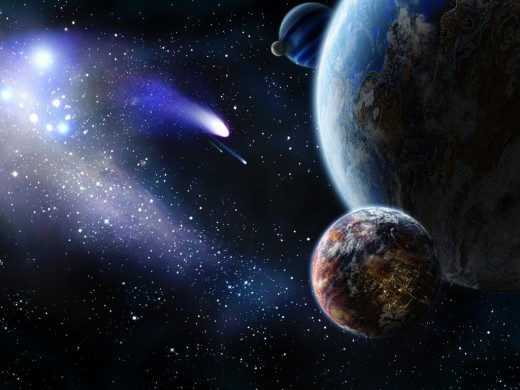
Factoid 60 - Goldilocks Planets
All living things on Earth need water to survive, so Astronomers are looking for exoplanets that are the right temperature for oceans and lakes of liquid water to exist. For this to happen, the exoplanets need to be right distance from their stars so that they are neither too hot nor too cold - just like the porridge in the Goldilocks fairytale.
Finding Earth-like Goldilocks planets elsewhere in our Galaxy is a very important part of NASA's Kepler mission. As well as being at the right temperature, these small, rocky exoplanets need to have thick atmosphere with high enough pressure to allow liquid water to stay on their surface.
About 22% of Sun-like stars have Earth-sized planets in their Goldilocks zones.
Knowledge Test; How well do you know are Solar System?
view quiz statistics© 2018 Leo J Wicks

